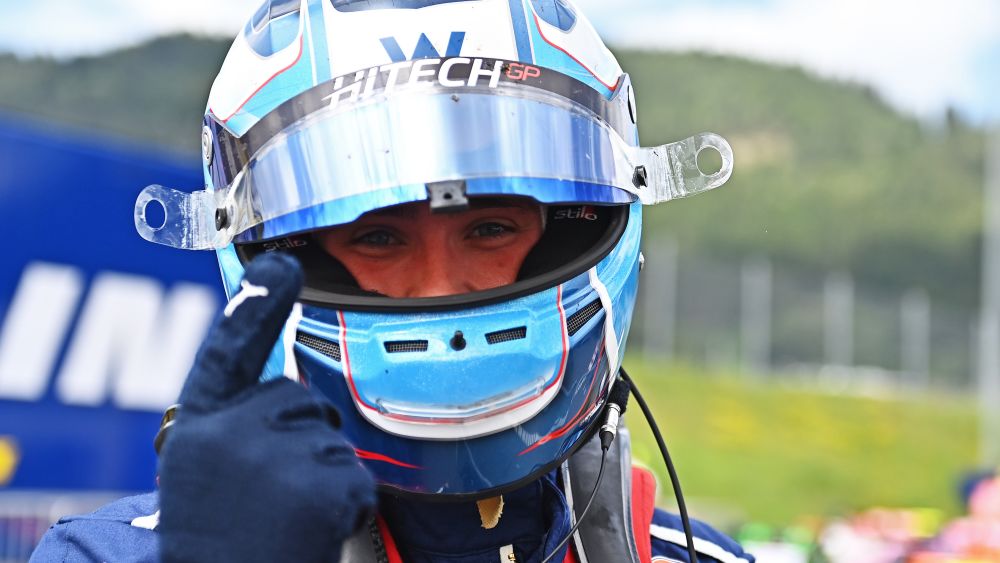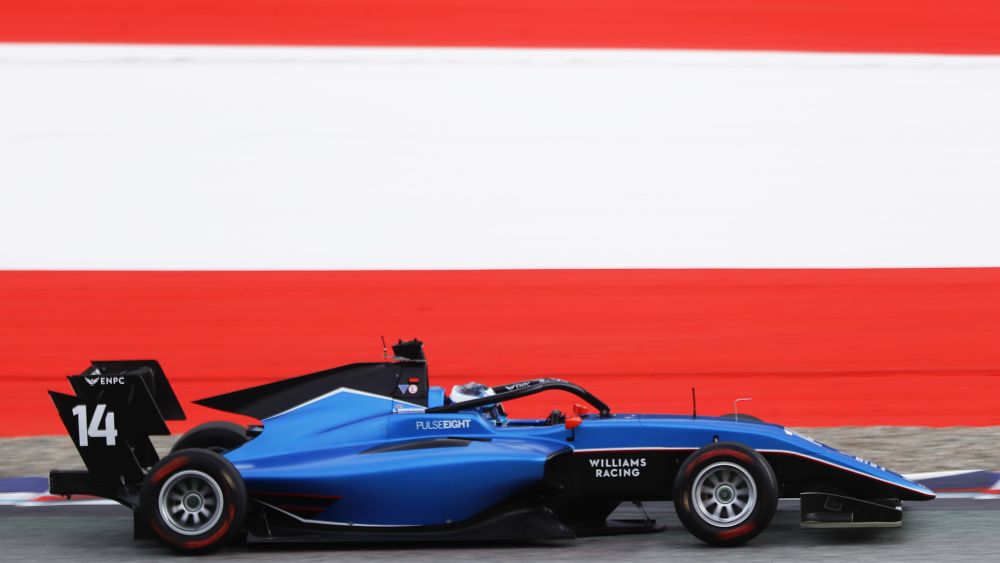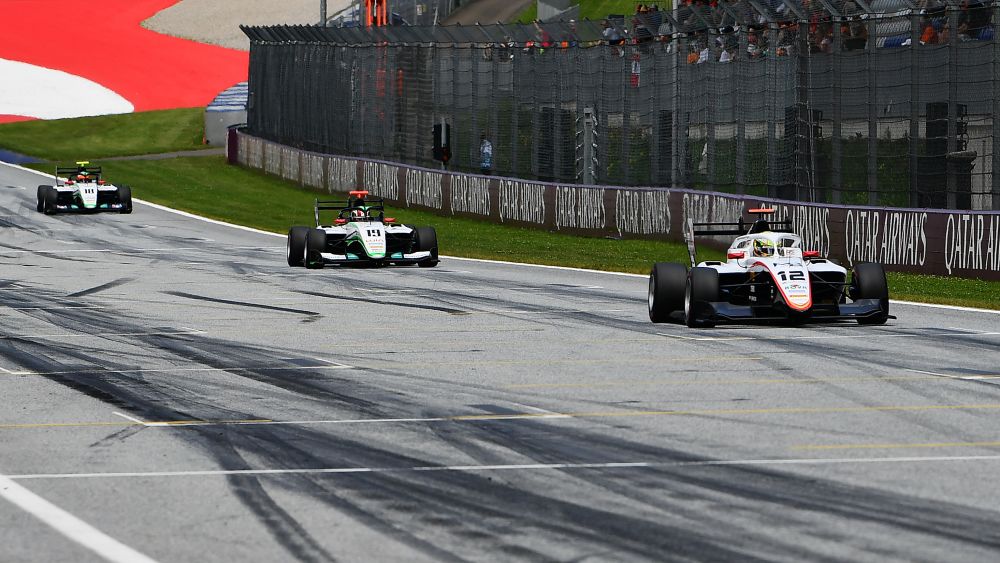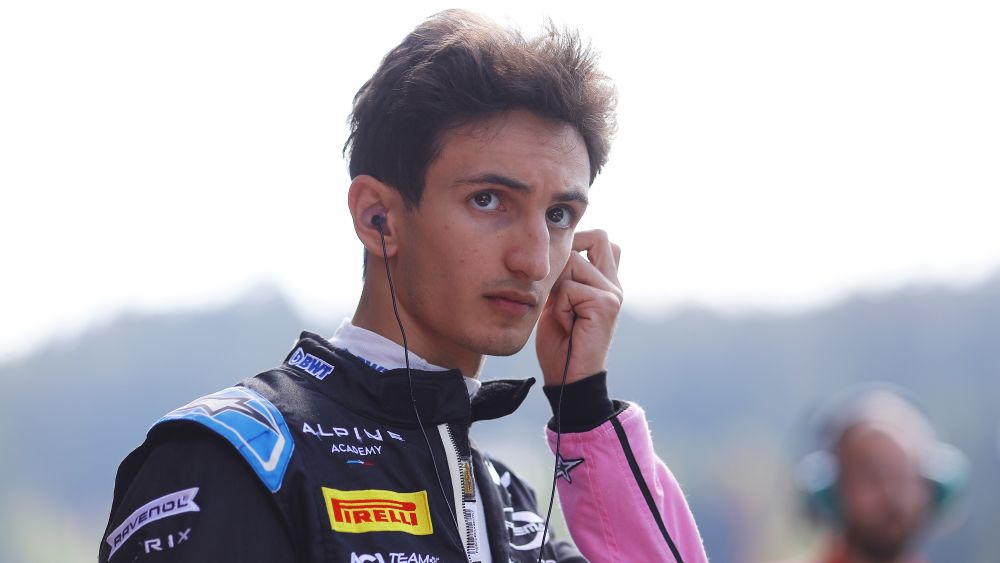Feature
SPIELBERG ANALYSIS: Is a slipstream really necessary to get Pole Position in Qualifying?

Luke Browning was at his dominant best in Spielberg, winning the Feature Race from Pole Position and launching himself to the top of the Drivers’ Championship.
The Hitech Pulse-Eight driver displayed tremendous tyre management skills while handling the pressure from a number of his rivals behind him on his way to victory.
But it was in Qualifying where Browning might have shone the brightest as he did something no driver wanted to do. His final two laps that gave him his first Formula 3 pole on Friday came at the front of the field with no one ahead to slipstream, something everyone on the grid actively avoided.
Browning himself did not want to be there as having led the pack around for most of their two warmup laps, he slowed down approaching the final sector, hoping that someone would be impatient enough to go ahead of him, but that did not happen.
“I think no one wants to be at the front in Spielberg Qualifying, hence the massive train in warm up,” said Browning in the post-Qualifying Press Conference.
"It got to the point where I came in T9, a message came over the radio my engineer said, ‘Right mate, you’ve got to go now’ and I just thought okay, head down. I could not believe it when I looked up at the screen after coming across the line.”
The interesting part about all of this is former Formula 3 Champion Dennis Hauger took pole in F2 an hour later by also being at the front of the field.
So is a tow in the Spielberg Qualifying as important as we first thought or is 2024 simply an outlier?

THE HISTORY OF IT ALL
It is a tricky question with a complicated answer as previous Pole Position laps at the Red Bull Ring in Formula 3 show a mix.
In 2022, Isack Hadjar took Pole Position for Hitech having not had a tow for most of his fastest effort. He did get a slipstream from Campos Racing’s David Vidales in the first sector, but he was actually slower there than on his previous effort.
Vidales then aborted his lap giving Hadjar a clear track and with that he set the fastest second and third sectors to take pole.
In 2019, Marcus Armstrong had a clear track and was fastest through the first two sectors ahead of his PREMA Racing teammate Jehan Daruvala, who was right behind him. The gap was about a tenth and a half approaching the line until a Red Flag halted their progress – although Armstrong would still take pole later on.
However, we have also seen drivers in the past stay close to the car in front on their flying lap and still take pole, as we saw Grégoire Saucy do last year – although he inherited top spot after Paul Aron had his lap deleted for exceeding track limits.
But, doing this is a risk, as Gabriele Minì explained after Qualifying on Friday.

“Everyone is trying to go for a tow like in Monza but then you see people without a tow get pole. In the end it just allows you to push so much more in the corners which with a slipstream, you make up what you lose in the corners.
“It's not perfect. It's probably one or two-tenths, Hitech were looking strong, and Luke obviously did a good lap, so I’m not surprised.”
THE RISKS INVOLVED
Those risks involved can usually be seen in the final sector, which is a fast, high-speed section where drivers want to avoid the turbulent wake from the car ahead going through the corners.
As shown in Formula 2, the car behind Hauger was his MP Motorsport teammate Franco Colapinto, who went fastest in the middle sector, where the tow is powerful, but lost time to the Norwegian in the final sector.
HIGHLIGHTS: Luke Browning wins Spielberg Feature Race from the front
Just behind them were the Hitech cars of Amaury Cordeel and Paul Aron, and the latter was actually faster in the first two sectors. But following in his teammates turbulent air, he lost time in the third sector even though he did end up with the faster lap.
The other risk is traffic as you cannot control what happens in front of you. Back in 2020, PREMA Racing’s Oscar Piastri qualified third while ART Grand Prix driver Sebastián Fernández took pole in the F3 season opener at the Red Bull Ring.
Fernandez beat Piastri by 0.135s and that was because while he had a good gap to the car in front, the Australian lost two-tenths in the final sector of his flying lap after encountering traffic.

Even this weekend, Minì felt he was on course for the top spot on his final push lap. The times show he was matching Browning’s 1:20.222 pole-sealing lap until he faced traffic in the final few corners and lost three-tenths, leaving him in P4.
But this is not to say that being out in front of the field is the best way to get Pole Position in Spielberg, it just means that it is not the worst thing.
READ MORE: Round 6 post-Feature Race thoughts from the top three
Browning himself admitted that he pushed the limits of the car to get pole.
“Here was a place where I put it all on the line. It was rewarded, I knew it was going to be tough and I would have to have to push on in the second sector without a tow and it paid off.”
What this does show is that the tow is not everything and being too close to the car in front can arguably affect a driver more around the Red Bull Ring. As always, the most important thing is to get the best and cleanest lap possible.
But, if you can get a nice slipstream effect without being disturbed by the car in front, especially in the final sector, then even better. It’s all about finding the right balance.